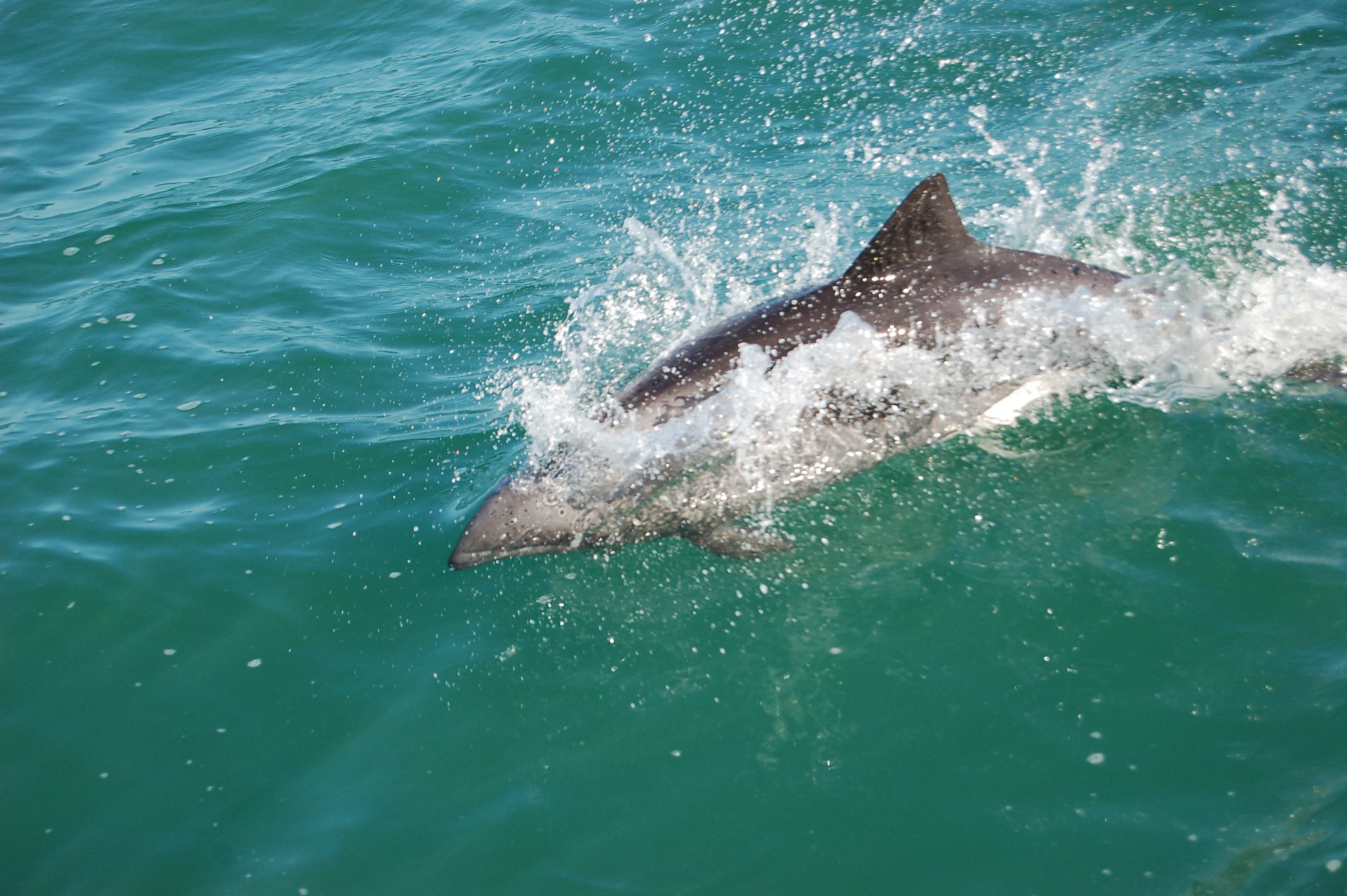The Irrawaddy dolphin is a euryhaline species of oceanic dolphin found in scattered subpopulations near sea coasts and in estuaries and rivers in parts of the Bay of Bengal and Southeast Asia. It closely resembles the Australian snubfin dolphin, which was not described as a separate species until 2005. It has a slate blue to a slate grey colour. Although found in much of the riverine and marine zones of South and Southeast Asia, the only concentrated lagoon populations are found in Chilika Lake in Odisha, India and Songkhla Lake in southern Thailand.
species of oceanic dolphin found in scattered subpopulations near sea coasts and in estuaries and rivers in parts of the Bay of Bengal and Southeast Asia. It closely resembles the Australian snubfin dolphin, which was not described as a separate species until 2005. It has a slate blue to a slate grey colour. Although found in much of the riverine and marine zones of South and Southeast Asia, the only concentrated lagoon populations are found in Chilika Lake in Odisha, India and Songkhla Lake in southern Thailand.
One of the earliest recorded descriptions of the Irrawaddy dolphin was by Sir Richard Owen. in 1866 based on a specimen found in 1852, in the harbour of Visakhapatnam on the east coast of India.
These dolphins are thought to reach sexual maturity at seven to nine years. In the Northern Hemisphere, mating is reported from December to June. Its gestation period is 14 months; cows give birth to a single calf every two to three years. Length is about 1 m (3.3 ft) at birth. Birth weight is about 10 kg (22 lb). Weaning is after two years. Lifespan is about 30 years.
There are plenty of food items that this dolphin feeds upon. They include fish, crustaceans, and cephalopods. During foraging periods, herds of about 7 dolphins will circle around prey and trap their victim. These prey entrapments occur slightly below the water surface level.
Although sometimes called the Irrawaddy river dolphin, it is not a true river dolphin, but an oceanic dolphin that lives in brackish water near coasts, river mouths, and estuaries. It has established subpopulations in freshwater rivers, including the Ganges and the Mekong, as well as the Irrawaddy River from which it takes its name. Its range extends from the Bay of Bengal to New Guinea and the Philippines, although it does not appear to venture off shore. It is often seen in estuaries and bays in Borneo Island, with sightings from Sandakan in Sabah, Malaysia, to most parts of Brunei and Sarawak, Malaysia. A specimen was collected at Mahakam River in East Kalimantan the local name comes from it.
Presence of the species in Chinese, Taiwanese, and Hong Kong’s waters has been questioned as the reported sightings have been considered unreliable, and the easternmost of ranges along Eurasian continent is in Vietnam.
No range-wide survey has been conducted for this vulnerable species; however, the worldwide population appears to be over 7,000. In India, Irawaddy dolphins are mostly found in Chilika Lake. Known subpopulations of Irrawaddy dolphins are found in eight places, listed here in order of population, including conservation status.
It is found in coastal waters of the Bay of Bengal, Sundarbans mangrove forest in the brackish-water Chilika Lake.
Conservation is hard, as this species is found in waters alongside developing nations. As such, they are working hard to food their population and give them a better life – which is generally a place where conservation is a low priority.
Of course, this can help – tourism is an increasingly large worldwide industry. As such a tourism industry, built around seeing this species could create a whole large number of extra jobs. Given the large ecotourism industry of India, it seems an easy extension to add this area.
Below this is a video of the species for your interest. Below that, is an amalgamation of any articles written on this species (we hope to add many in the future). Below that, I will add any links I make to help with you seeing the species in the wild. If you work in tourism and ever see this species, do get in touch, we would love to help people find you.

is a river dolphin, found in the coastal waters of southeastern South America. Being a member of the Inioidea family, it is only capapable of living in saltwater, so is found in the ocean and saltwater estuaries. This has an unfortunate effect of being around the mouth of rivers, and therefore being effected by all the pollutants picked up the whole route of the river.





 species of oceanic dolphin found in scattered subpopulations near sea coasts and in estuaries and rivers in parts of the Bay of Bengal and Southeast Asia. It closely resembles the Australian snubfin dolphin, which was not described as a separate species until 2005. It has a slate blue to a slate grey colour. Although found in much of the riverine and marine zones of South and Southeast Asia, the only concentrated lagoon populations are found in Chilika Lake in Odisha, India and Songkhla Lake in southern Thailand.
species of oceanic dolphin found in scattered subpopulations near sea coasts and in estuaries and rivers in parts of the Bay of Bengal and Southeast Asia. It closely resembles the Australian snubfin dolphin, which was not described as a separate species until 2005. It has a slate blue to a slate grey colour. Although found in much of the riverine and marine zones of South and Southeast Asia, the only concentrated lagoon populations are found in Chilika Lake in Odisha, India and Songkhla Lake in southern Thailand.